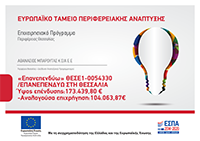Pelion History
Pelion history begins almost together with the creation of Dimitriada around 300 B.C. by the King of Macedonia, Dimitrios the Besieger. Dimitriada was then the center of the Magnets, and managed to survive the invasions of the Goths, the Slavs, the Turks, the Bulgarians and the Franks.
During the Byzantine Period we don’t observe any important towns in Pelion, whereas Thessaly is constantly at war with foreign breeds, such as the Goths (396 A.D.) and the Huns (539-540 A.D.) who claimed Dimitriada.
When Constantinople passed into the hands of the crusaders in 1204, their leader conquered Thessaly and Pelion. In 1222 the Bishop of Epirus Theodore freed this region from the Latins and in 1393 Thessaly succumbed to the Turkish possession.
During the Greek Revolution, the well-known cleric Anthimos Gazis from Pelion paved the way for the struggles towards independence. Pelion took part in the Greek Revolution with Captain Kyriakos Basdekis on 7th May 1821 but the pashas of the region drowned the revolutionary movement of Pelion in blood.
A second liberating effort in March 1854 turned out fatal as well. Pelion was finally liberated in 2nd November 1881, with the help of the British, a movement made by the already liberated Greeks and the support of the external forces.
Ever since 1830, the inhabitants of Pelion moved towards the coasts where they created structured settlements. Unfortunately, they had to move higher quite often, as they became the objective of various pirates. The regions mostly preferred were those near monasteries.
Zagora, the biggest and most remarkable village in Pelion, and the beach of Chorefto seem to have been created in that particular way.
The monastery of Metamorphosis tou Sotiros (metamorphosis of the Savior is thought to be the beginning of the creation of Zagora as it is today.
The monastery was built around 1160 A.D. It had a lot of wealth and a big number of monks but it was unfortunately destroyed by a random fire in August 1887.
The first district of Sotira-Zagora was evolved around the monastery and then the rest of the districts, Agios Georgios, Agia Kyriaki and Agia Paraskevi, slowly developed.
New Zagora began evolving quite quickly while agriculture, trade and Christianity of the region blossomed.
Samples of this particular development were its well-built mansions, its monuments and its rich ecclesiastic tradition.
The “Ellinomuseo – School of Regas Fereos” is the first among the monuments in Zagora that was formerly used as the boarding house of the old school. A part of it can still be seen at the beginning of the road to Chorefto.
The development of Zagora can also be seen in its relics, 1200 old printed books, codes and manuscripts of the old Zagorian Library (donated by the Patriarch Kallinikos the Third, by I. Prigos, by the Lapati and Voltos brothers. Approximately 13.500 books were donated to the library by Konstastinos and Apostolos Konstantinides, by Alexandros and Konstantinos Kassavetis, by Theodoros Afentoulis, by the poet, Konstantinos Tsagaradas and many others.
Zagora and Chorefto were the first in the production of silk (over 25.000-30.000 kilos a year) and they exported it to Britain, Dalmatia, Germany and other European countries as well. They also brought big amounts of wool from various regions in Greece (Levadia almost gave its whole production) and after processing it together with the local quantities they produced the famous “capes of Zagora”.
In order to export these commercial products they started travelling to the Mediterranean Sea and the famous ships from Zagora carried the products of Chorefto from its port to all the big ports of Europe, Constantinople and Smyrna.
So there was Chorefto, a significant and flourishing commercial centre, at the east side of Pelion in Zagora.
As far as the modern history of Pelion is concerned, in 27th October 1916, the association called “Zagora Agricultural Products Sales Association” was founded by 199 residents of Zagora. The basic crops at that time were those of potato and hazelnut.
In the mid 60s there is the cultivation of the “Starkin Delicious” apples. The Association starts developing so fast that in 1980 the gathering of apples reaches 10.000-15.000 tons a year and at the same time pears, kiwi, chestnuts, olives, cherries, etc are produced. That way it becomes one of the most important financial units in Magnesia.
Nowadays Zagora and Chorefto can offer their visitors the prestige and history of its glorious past combined with the mild touristic development through the traditional customs and the events taking place.
By highlighting its natural and cultural wealth combined with one of the most beautiful beaches of Pelion, Chorefto, as well as the stories of the mythical Centaurs, our region can become the ideal place visitors could think of spending their vacation.



